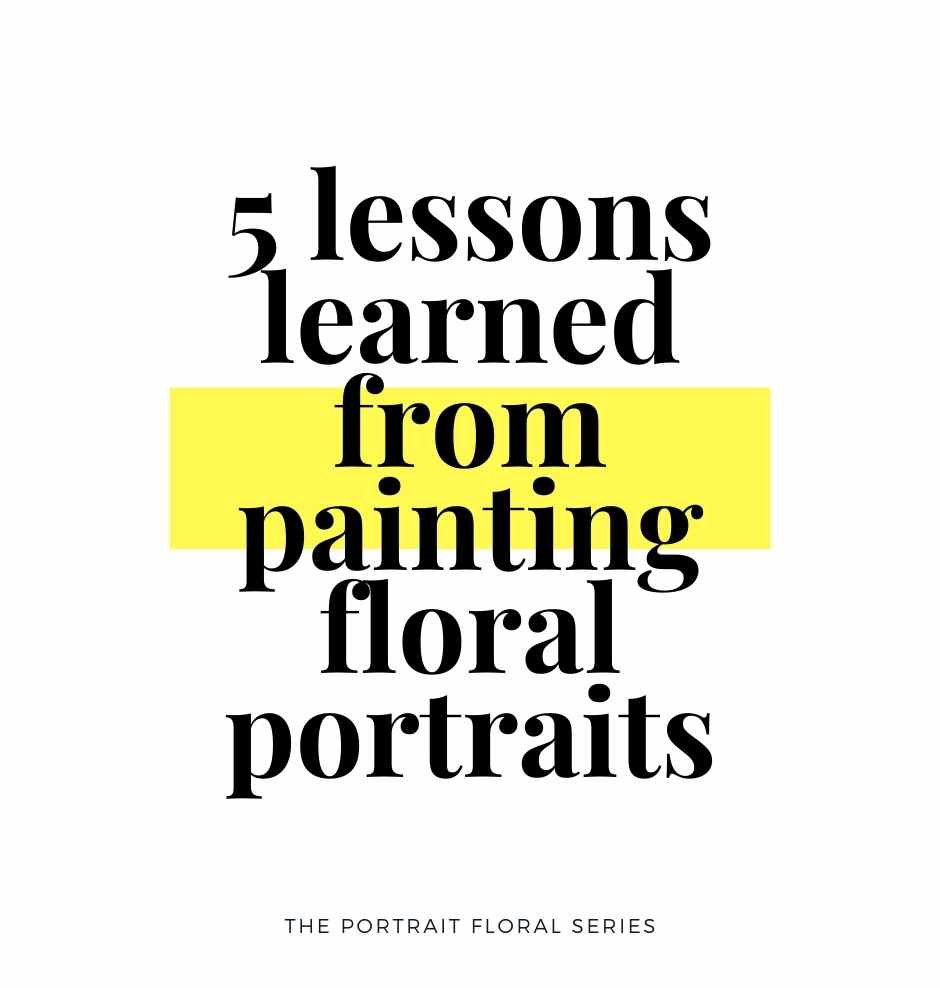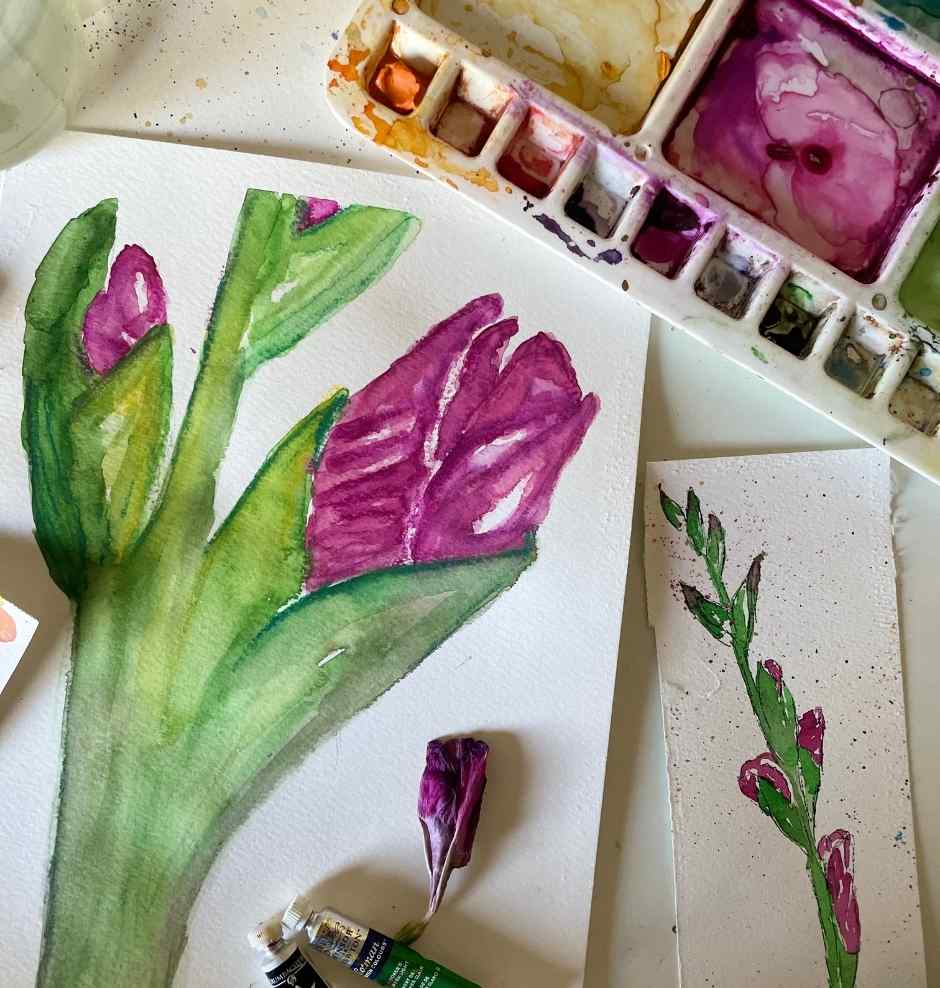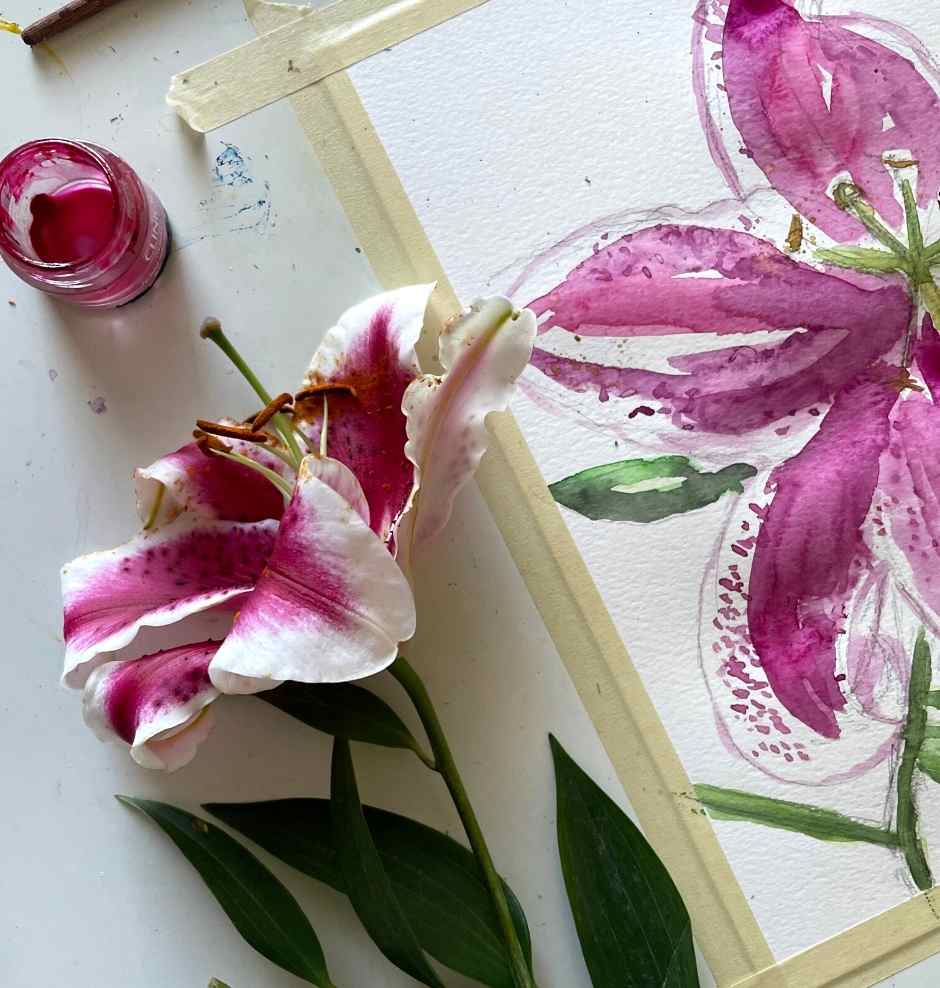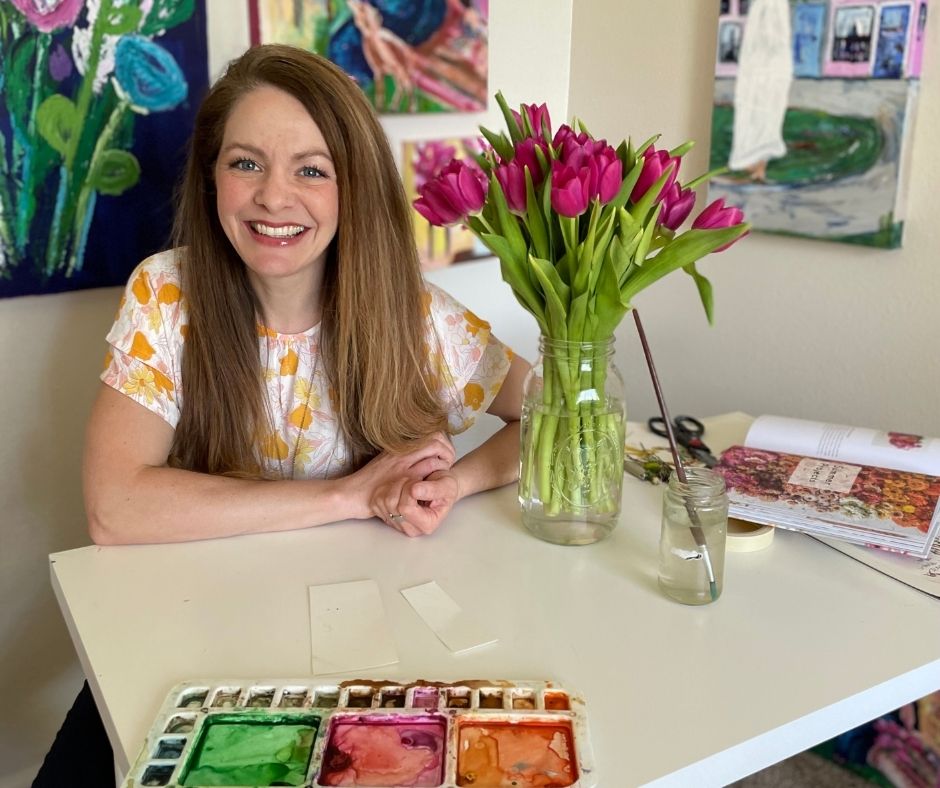This spring we launched into a new season on the YT tube channel: the season of painting floral "portraits."
According to the Oxford Dictionary, the definition of a portrait is: "a painting, drawing, photograph, or engraving of a person, especially one depicting only the face or head and shoulders."
That is what we have (and are) doing when we paint flower portraits – focusing in on the "face" of the flower. In some instances, such as the gladiolus, we focus on a single bloom. In other portraits, such as the upcoming sunflower portrait, we paint the whole flower, seeking to fill the paper with the flower face.
It's been a learning experience. Some of the floral portraits turn out better than others.
For example, my goal is to fill the paper with the flower.
That didn't work so well with the Bird of Paradise painting. In fact, I had to film multiple times because I started sketching and realized if I was going to create something proportionally accurate, it was going to go beyond the paper's borders. The elongated narrowness of the flower both horizontally and vertically made it nearly impossible to fill the paper.
That is one of the lessons I'm learning.
Here are five "lessons" I'm learning from these fun floral portraits.
Painting Portraits Reveal the Distinctive Details of the Flower's Face
Painting up close and personal reveals the distinctive characteristics of a flower. Often when painting, I realized I had to draw and paint what actually was in front of me instead of going to what I assumed was there.
The
gladiolus portrait was harder to paint then a single stalk of gladiolus. There nuance in a single stem includes more detail than I noticed when painting the whole stalk of blooms.
If you'd like to paint a group of gladioluses, check out the free online workshop: It's about an hour in length (too long for a YT video). You'll get all the details from sketching to painting to the finished work. Find out more here. The Simplest Forms Can Be the Hardest to Replicate in 2D
So far, we've painted the following flower portraits: tulip, gladiolus, bird of paradise and the star gazer lily. Coming up we will paint a gorgeous sunflower face and a semi portrait: a bouquet of alstroemeria flowers.
Guess which has challenged me the most.
If you said, the bird of paradise, you've guessed correctly!
You'd think with less frills and petals, it would be easy, right? No, my friend, no.
Those elegant lines merging with the bird's "feathers" extending vertically into the air presented a bit of a challenge.
Elegance and simplicity sometimes go hand in hand, quite deceptively.
Each Flower Has Its Own Unique Characteristics
Flowers are so different!
The variety and unique characteristics of each one continues to amaze me! The shape and texture of petals. The way the stems seem to protect and wrap around the flower faces while other stems do their own thing, as if they are the star of the show.
The colors, the shapes, and the way each flower gives a different atmosphere to a room.
Capturing those distinctives in each painting has been a blast.
Painting Portraits is More Stressful than other Painting Styles
I can hide flaws and foibles waaaaay easier when I paint a bouquet! Painting these portraits has presented a fresh challenge – and a bit more stress – to me, the kind of stress that stretches one's skills.
Looking at Things Up Close Helps Me Notice Things Differently in Lots of Areas
A funny thing happens when we began to look more closely at the details of the flower.
The eyes (and brain) start to pick up nuance and details everywhere.
Instead of looking over things quickly, taking a speedy sweep of a landscape, parking lot, or group of people, I start to slow down and gather more detail.
I see more and appreciate more too.
Looking at the details of the gladiolus, I began to see the flower in a new way. I note the way the colors merge together and the varying thickness of the lines on stems.
I hadn't noticed the dots all over the star gazer lily before. I could tell you the colors, the general shape of the flower, but the hundreds of dots had been missed.
But not now.
Becoming a study-ier of flowers has made into a bit of a private investigator, beginning to sharpen my observational skills, and noticing things once easily missed and passed over as irrelevant or simply because of too-fast, sloppy moving.
If I could sum up what I've learned these past several weeks, it is this:
Practice Makes Everything Better, Faster
Painting in a repetitive style over and over and over brings out areas where we want to get better. The more we paint, the better we (eventually) get.
If painting is not your thing, replace the word "paint" with whatever it is you want to do.
Let's grow and sink deep into a few things well! It makes for a rewarding life, not only for ourselves, but for those around us too!





